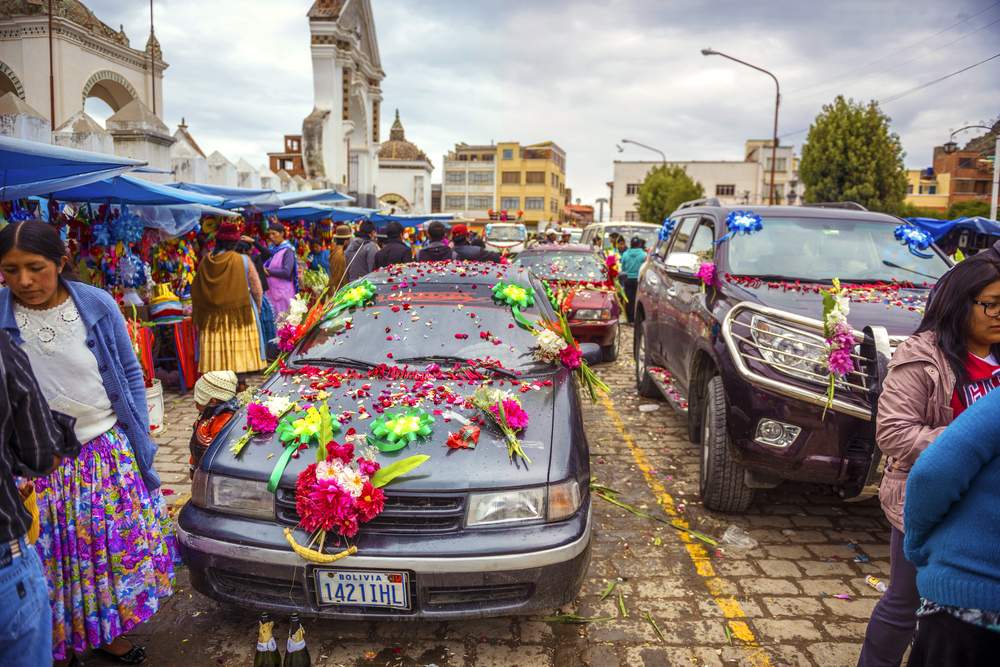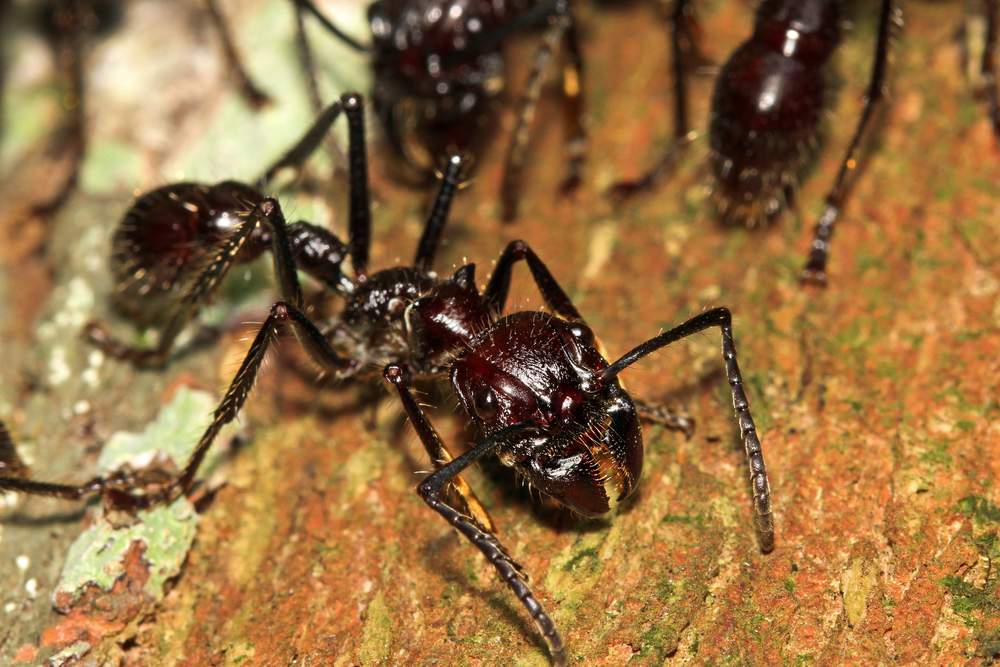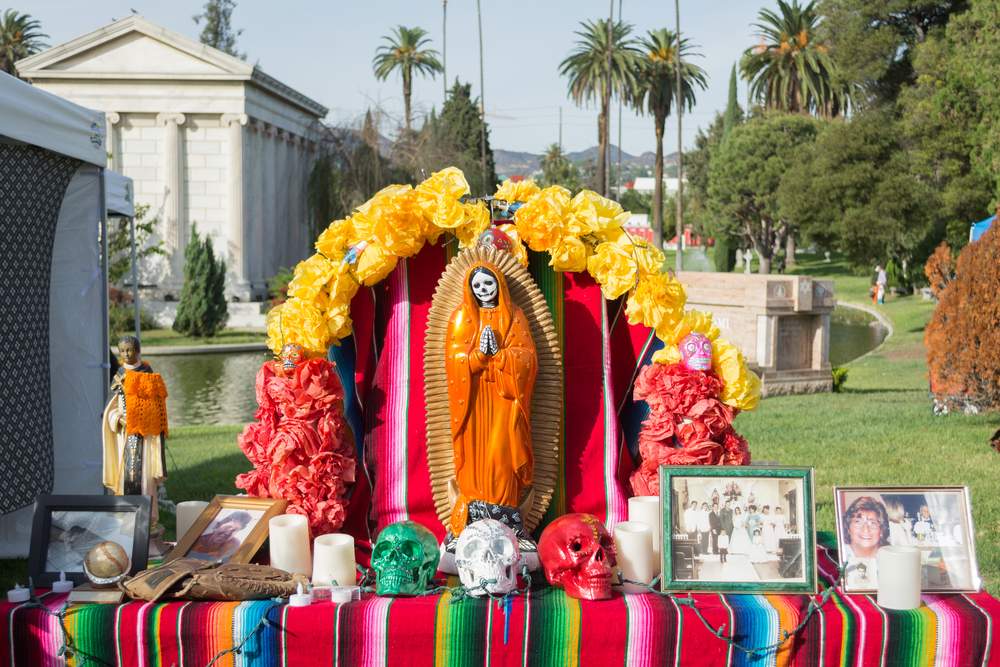Throughout the world, believers adhere to practices that strike outsiders as bizarre, but seem completely reasonable to the faithful. The religions most familiar to westerners, Christianity, Judaism, and Islam have their fair share of unusual rituals, too: simulating the eating of flesh and the drinking of blood (Communion), performing surgical procedures on infants and children (Bris, Khitān), and attempting to restore sight and hearing solely by touch or prayer (Faith Healing).
Piercing your body with hooks as a sign of devotion, tossing a baby from the top of the tower to make him healthier, and having your car blessed with holy water and flowers may sound strange (and dangerous), but who’s to say they’re any weirder than the religious rituals we’ve come to accept at home? From rites of passage to rituals for luck and prosperity, here’s a look at some unusual religious rituals from around the world.
Extreme body-piercing

During the celebration of the religious holiday Thaipusam, Hindus throughout the world declare their devotion to Lord Murugan by piercing various parts of their bodies. The piercings are usually done with skewers, lances, large hooks, or a small spear called a vel. Although the tradition started out as a small hole in the tongue created by the vel as a reminder to remain silent during meditation, it’s evolved over the years to include the entire body, with the back, chest and face favored as parts to pierce. Some devotees even go as far as attaching several large hooks to their backs and using them as a harness to pull heavily loaded chariots down streets or up hills.
“…the tradition started out as a small hole in the tongue created by the vel as a reminder to remain silent during meditation, it’s evolved over the years to include the entire body.”
During the hugely popular three-day festival each February (which attracts more than a million people in India and Singapore respectively), Tamil Hindus celebrate Lord Murugan’s birthday and his killing of the malevolent spirit Soorapadman with a spear. For this celebration spears up to two meters long are carried and often attached to elaborate headgear or other decorative apparatus. Pierced devotees march in festival parades to demonstrate their devotion and to have their wishes granted.
>>Read more about the Thaipusam festival Hanging wax body parts
Igreja de Nosso Senhor do Bonfim (Church of our Lord of Bonfim or the “Good End”) looks like other churches in Brazil from the outside. But step inside, and hanging from the walls and ceilings of this Salvador de Bahia church are wax and plastic arms, legs, livers, hearts, lungs, eyes, uteri, and other internal organs and miscellaneous body parts. During the annual religious ceremony and procession of the Festa do Bonfim (Feast of the Good End), churchgoers dress in traditional clothing, attend mass at the Church of Conceição da Praia in Salvador, then walk eight kilometers uphill to Igreja de Nosso Senhor do Bonfim.
“…people hang wax or plastic representations of various body parts and photos of themselves or loved ones as either an offering to pray for divine intervention or thanks for curing a particular ailment.”
Upon arrival, they wash the steps and plaza in front of the church, while singing and dancing. The event is hugely popular and draws thousands of people from all over the world. The church is believed to have curative properties, and in the Sala dos Milagres (Room of Miracles), people hang wax or plastic representations of various body parts and photos of themselves or loved ones as either an offering to pray for divine intervention or thanks for curing a particular ailment. Seeing all those body parts hanging from the ceiling can be a tad jarring to the uninitiated, but they’re left in a spirit of hope and gratitude.
Blessing vehicles

Although it may seem strange to North Americans to have their mode of transportation blessed by a priest, this ritual is practiced in many parts of the world. Priests perform a ceremony that ensures safety and luck by praying, chanting, sprinkling holy water, fanning perfumed smoke, drawing signs and symbols on the vehicle, and adorning it with flowers.
“Every week, at Copacabana near Lake Titicaca, Bolivia, owners decorate their cars, taxis, and buses with flower garlands, wreaths, and confetti, then line up for a ceremony called ‘La Bendición de Movilidades’ (The Blessing of the Vehicles).”
In
Thailand, Buddhist priests regularly bless new cars, motorbikes, and even new Thai Airways jets. In the Philippines, it is considered fortuitous to have a Catholic priest bless your jeep, car or motorcycle on Palm or Easter Sunday. Every week, at Copacabana near Lake Titicaca, Bolivia, owners decorate their cars, taxis, and buses with flower garlands, wreaths, and confetti, then line up for a ceremony called “La Bendición de Movilidades” (The Blessing of the Vehicles). After the priests complete the mass blessings, owners and their families celebrate with champagne and fireworks. It may come as a surprise to some, but the United States is no exception, and several states (California, Rhode Island, and New Jersey among others) hold large gatherings each year to bless motorcycles, riders and their friends to keep them safe and accident-free.
Baby-Tossing
For more than 700 years, at Grishneshwar Temple in western India’s Maharashtra state, parents have asked clerics to drop their infants from a 50-foot tower. The parents believe that the free-fall will make their children more intelligent, braver, luckier, and healthier. Children between the ages of one and two are carefully dropped from the tower, and caught a sheet held by men below, then are quickly passed into the arms of their waiting parents.
“The parents believe that the free-fall will make their children more intelligent, braver, luckier, and healthier.”
Many Westerners and secular Indians who have witnessed the spectacle are horrified by this ceremony, but it’s traditional in rural parts of India and is practiced both by Muslims and Hindus. Although religious officials are quick to declare that no children have been injured in the ritual, state officials are currently working to ban the practice. Supporters of the ban state the trauma and danger to the children, who are understandably terrified and visibly shaken by the ordeal, but those opposed to the ban feel strongly that practitioners should be allowed religious freedom.
>> Learn more about culture and religion in India and read Travel in India: A Healing Journey
Wearing venomous ant-filled gloves

Rituals that mark the transition from boyhood to manhood exist all around the world. In the Amazon, male teenagers must enter adulthood by plunging their hands into gloves filled with hundreds of venomous ants. Bullet ants, the largest ant on the planet and with one of the most painful bites, said to be 30 times more painful than a wasp sting, are woven into the ritual gloves and used as part of the initiation ceremony for the region’s youth. The Brazilian indigenous tribe, the Satere-Mawe, believe that experiencing this intense level of pain and suffering will make young men into braver, tougher, and better warriors, and that the ritual will protect them from disease.
“The boys are expected to keep the gloves on for ten minutes, letting the ants attack their hands.”
The boys are expected to keep the gloves on for ten minutes, letting the ants attack their hands. The initial bites are painful enough, but that is only the beginning of the ordeal. When the neurotoxins from the ants kick in, participants suffer symptoms that can last for hours or even days, ranging from gradually intensifying pain, paralysis, fever, hallucinations, shaking, convulsions, and loss of muscle control. Those who endure the torment become men.
Chasing a naked man
Since 767 AD, every year across Japan, over 9,000 men participate in the annual Shinto Naked Festival, also known as Hadaka Matsuri. A highlight of the festival is the Shio-fumi ritual in which heavy Shinto shrines are carried by dozens of men dressed only in loincloths (fundoshi) through the streets of their town. One man is chosen as the Shin-otokoa, or Naked Man, who must shave all body hair and run through the streets unclothed while being pursued by thousands of male festival goers trying to touch him for good luck and prosperity. Although it is a high honor to be named Naked Man, it can also be extremely dangerous, as devotees overcome with excitement, emotion, and copious amounts of sake have been known to shove, kick, and seriously injure the chosen one in the competitive scramble to touch him.
“One man is chosen as the Shin-otokoa, or Naked Man, who must shave all body hair and run through the streets unclothed while being pursued by thousands of male festival goer.”
In general, the participants are men, but in recent years, women have also participated. The festival is popular with locals and foreign tourists, and individual towns often host family-friendly activities such as food stalls, games, and booths that sell festival souvenirs.
>> Read 10 Reasons the World Would be a Better Place if Japan Ruled the Earth
Celebrating in the Cemetery
 [section]As Americans and Canadians are decorating for Halloween and choosing costumes for parties and trick-or-treating, Mexicans prepare to honor their dead on All Souls’ Day by celebrating Día de los Muertos (Day of the Dead). Families spend months making cookies, candies, and cakes in the shapes of skeletons, skulls, internal organs, coffins, crosses, altars, and flowers and gathering appropriate items to take to the cemetery on the night of the celebration. Whole families visit the graves of their loved ones to clean and maintain the gravesites, place candles, flowers, and gifts around the tombstones and to celebrate the memory of their ancestors. Then the families gather for an all-night party in the cemeteries, bringing the favorite food and drink of the deceased, photos and other mementos, as well as flowers and decorations.
[section]As Americans and Canadians are decorating for Halloween and choosing costumes for parties and trick-or-treating, Mexicans prepare to honor their dead on All Souls’ Day by celebrating Día de los Muertos (Day of the Dead). Families spend months making cookies, candies, and cakes in the shapes of skeletons, skulls, internal organs, coffins, crosses, altars, and flowers and gathering appropriate items to take to the cemetery on the night of the celebration. Whole families visit the graves of their loved ones to clean and maintain the gravesites, place candles, flowers, and gifts around the tombstones and to celebrate the memory of their ancestors. Then the families gather for an all-night party in the cemeteries, bringing the favorite food and drink of the deceased, photos and other mementos, as well as flowers and decorations.
“Families spend months making cookies, candies, and cakes in the shapes of skeletons, skulls, internal organs, coffins, crosses, altars, and flowers…”
Gifts for the dead may include toys (for children who have passed away), bottles of alcohol, food, pillows and blankets (so that the dead may rest comfortably), marigolds, or even CDs of the deceased’s favorite music. Family members gather to tell funny stories, sing songs, drink, eat, and celebrate both life and death. The holiday is all about appreciating the cycle of life and death, not to mention enticing the spirits of the dearly departed back to earth for a night in order to hear the prayers and grant the wishes of the living.
>> See photos of the Day of the Dead and read Why You Should Ignore All the Urban Legends & Take The Kids to Mexico
Channeling the gods
Santeria is a mixture of African, European, and indigenous American beliefs. Very little is known of believers ceremonies and rituals, with one notable exception: the channeling of gods known as Orisha. In Venezuela and many Carribean countries, those worshiping the Santeria saint, Maria Lonza, host sessions for communicating with the religion’s gods and goddesses. Every year, on October 12th, followers come together at magical Sorte Mountain, Maria’s legendary home, to worship her and commune with her fellow gods.
“Every year, on October 12th, followers come together at magical Sorte Mountain, Maria’s legendary home, to worship her and commune with her fellow gods.”
Channeling teams consist of one materia (the person who will become possessed) and one bonco (the interpreter of the gods’ messages) who work together to give the gods and goddesses a corporeal presence for the night’s celebrations. Once possessed and in a spiritual trance, materias may engage in a range of activities, from dancing over coals (baile en candela), lighting incense and candles, drinking alcohol, smoking cigars, sacrificing chickens, screaming out in religious fervor, spitting, cursing, drawing mysterious signs and symbols on the ground, adorning themselves with flowers, and throughout it all conveying cryptic messages to the faithful.
Further reading:
Photos credits: Shutterstock.com, Khoo Eng Yow /Shutterstock.com, cornfield /Shutterstock.com, klublu /Shutterstock.com, Ryan M. Bolton /Shutterstock.com, betto rodrigues.



 [section]As Americans and Canadians are decorating for Halloween and choosing costumes for parties and trick-or-treating, Mexicans prepare to honor their dead on All Souls’ Day by celebrating Día de los Muertos (Day of the Dead). Families spend months making cookies, candies, and cakes in the shapes of skeletons, skulls, internal organs, coffins, crosses, altars, and flowers and gathering appropriate items to take to the cemetery on the night of the celebration. Whole families visit the graves of their loved ones to clean and maintain the gravesites, place candles, flowers, and gifts around the tombstones and to celebrate the memory of their ancestors. Then the families gather for an all-night party in the cemeteries, bringing the favorite food and drink of the deceased, photos and other mementos, as well as flowers and decorations.
[section]As Americans and Canadians are decorating for Halloween and choosing costumes for parties and trick-or-treating, Mexicans prepare to honor their dead on All Souls’ Day by celebrating Día de los Muertos (Day of the Dead). Families spend months making cookies, candies, and cakes in the shapes of skeletons, skulls, internal organs, coffins, crosses, altars, and flowers and gathering appropriate items to take to the cemetery on the night of the celebration. Whole families visit the graves of their loved ones to clean and maintain the gravesites, place candles, flowers, and gifts around the tombstones and to celebrate the memory of their ancestors. Then the families gather for an all-night party in the cemeteries, bringing the favorite food and drink of the deceased, photos and other mementos, as well as flowers and decorations.